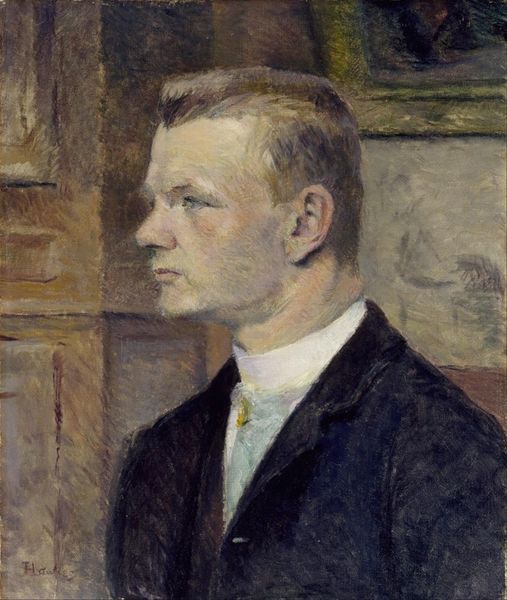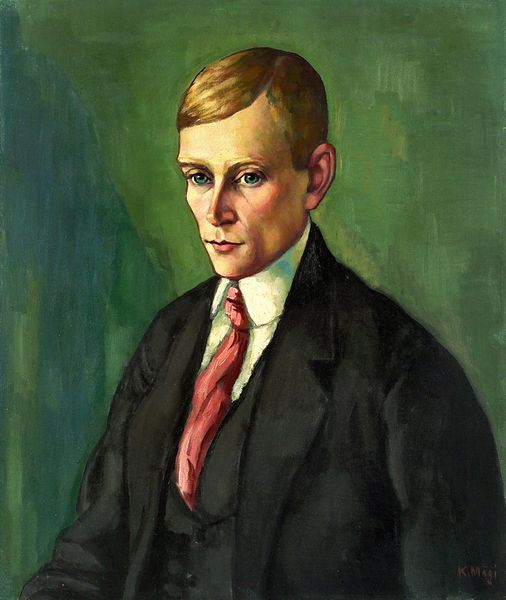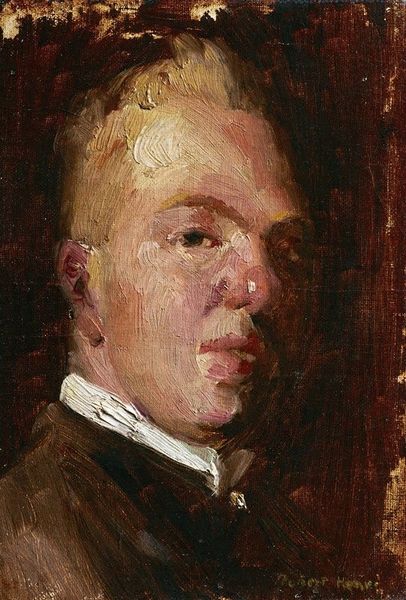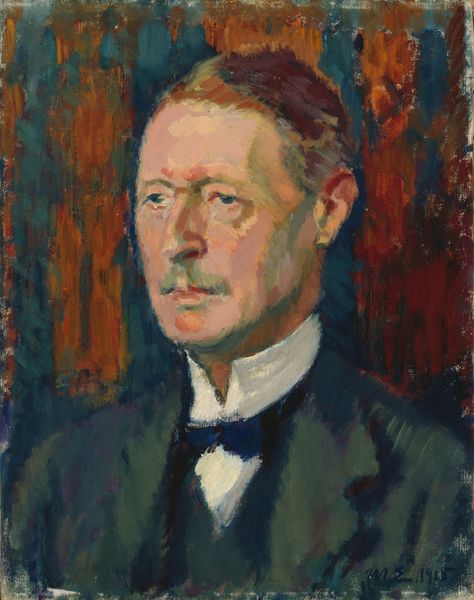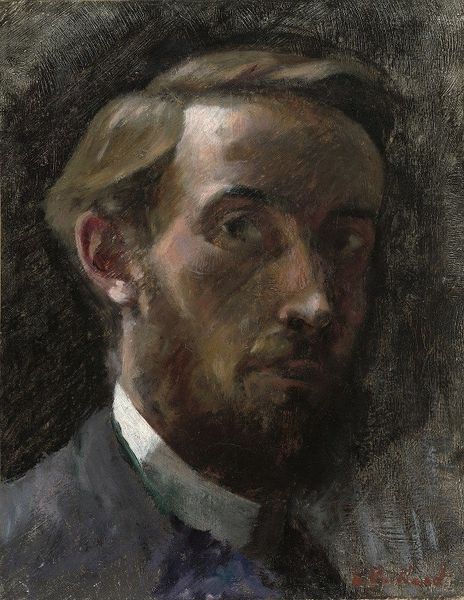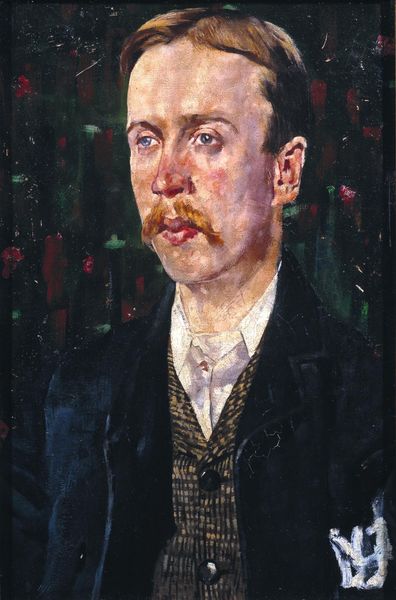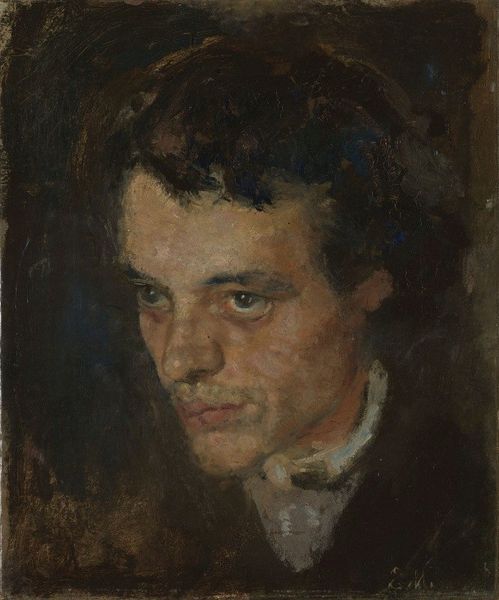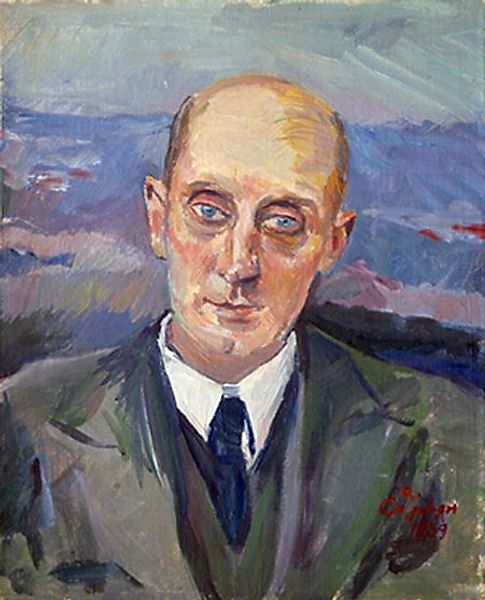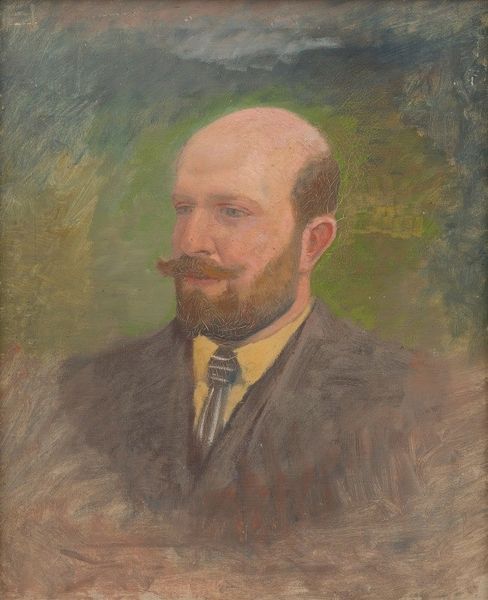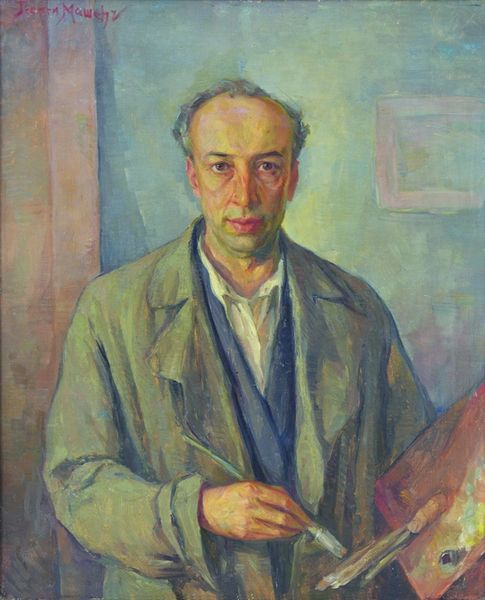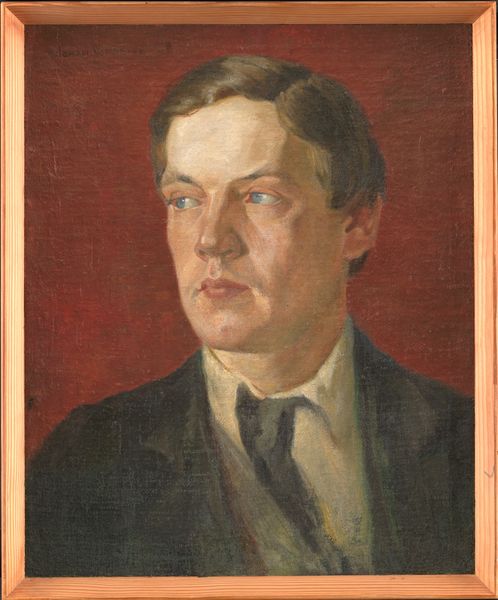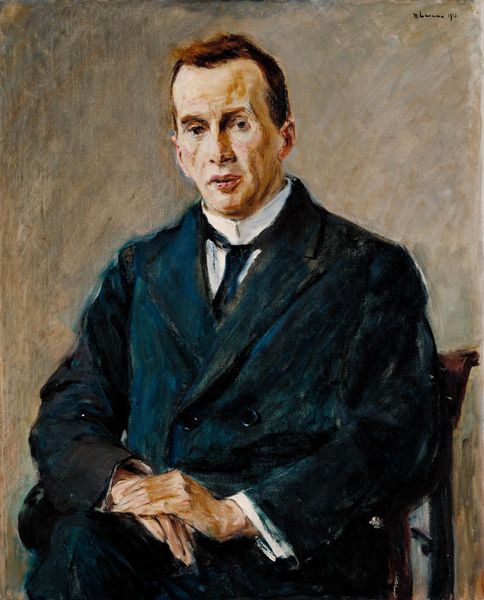
painting, oil-paint
#
portrait
#
figurative
#
self-portrait
#
painting
#
oil-paint
#
oil painting
#
realism
Copyright: Public Domain: Artvee
Editor: So, here we have Walther Gamerith's "Early Self-Portrait" from 1930, done in oil paint. It feels…stark, almost clinical. There's this intensity in his gaze. How do you interpret this work, particularly within the context of its time? Curator: The date is critical, isn't it? 1930, right before the real economic and political upheavals began in Austria and Germany. Self-portraits are always intriguing, but knowing this was painted on the cusp of such a tumultuous decade gives it a heightened sense of…foreboding, perhaps. The "starkness," as you call it, might reflect the growing anxiety of the intellectual class. Editor: Foreboding…yes, I see that. Was there a specific tradition of self-portraiture that Gamerith might have been engaging with or reacting against? Curator: Absolutely. German Expressionism, with its raw emotion and psychological intensity, casts a long shadow. However, Gamerith seems to pull back from the more overtly distorted style of someone like Kirchner or Heckel. He’s aiming for realism, but with that undercurrent of unease we discussed. What’s interesting to me is the subtle push and pull between objective representation and subjective feeling. Do you think the suit and bow tie are an attempt to project respectability in a period of uncertainty? Editor: That's a fascinating point. The suit *could* be a performative act, a way of maintaining appearances while things are falling apart. I hadn't considered that! Curator: Think about the public role of the artist too, at this point. Was this meant to be seen? Was it an exploration only for himself? These factors shape how we receive it now. The choice to present himself so formally is definitely a conscious decision that says something about Gamerith's awareness of his position and persona as an artist. Editor: That's really helpful. I definitely have a much deeper appreciation for the painting and its historical context now. Curator: And I see your perspective on the underlying emotions that makes this painting relevant and worth examining even now. Thank you!
Comments
No comments
Be the first to comment and join the conversation on the ultimate creative platform.
